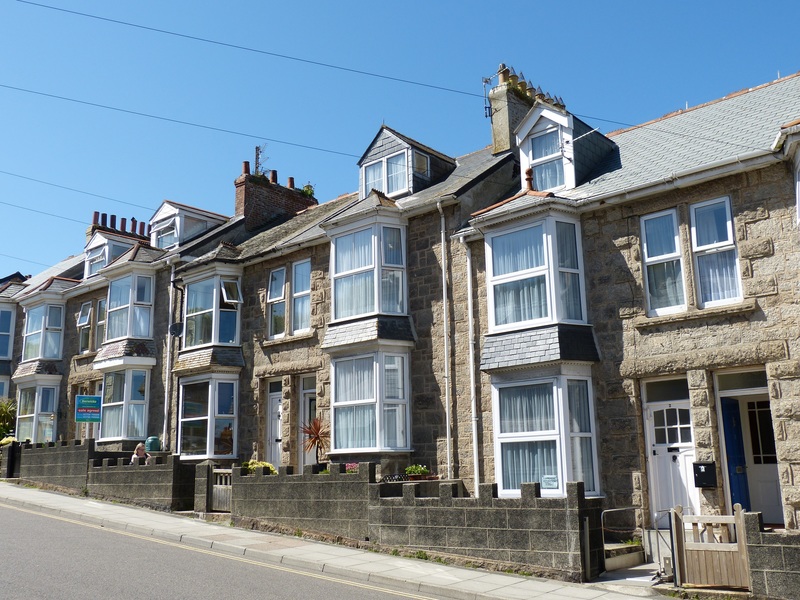Housing inequalities have been laid bare by COVID-19, further exposing a housing crisis in England that is already severe. Unless some genuine steps are taken, it will only get worse for millions living in inadequate housing. The numbers are staggering – more than 8 million people are living in unsuitable housing in England.
Recent government housing policy for England has backed shared ownership as one of the solutions. The idea is that people jointly own their home with a housing association. They pay a combination of rent, mortgage and service fees.
On the face of it, shared ownership seems to be a good idea. It becomes easier to get started on the property ladder. As the owner’s income rises, they should be able to increase the proportion of the property they own over time. This takes place through a process called staircasing, where further shares of equity are bought.
However, our research suggests it may not always work well in practice, either as an affordable housing option or as a route to full ownership.
Affordable housing
Successive governments have promoted shared ownership, citing its social progressiveness and capacity to promote social mobility. Local planners in England have routinely agreed to include shared ownership units in the required affordable housing element of new developments.
Earlier this year, the House of Commons put the figure for shared ownership households in England at 157,000. Shared ownership takes up an increasing proportion of the overall supply of affordable housing. It made up 34% of new affordable housing supply in 2018-19, a rise from 23% in 2015-16. The median initial equity stake purchased was £100,000 with a median initial deposit of £12,800.
While the demand for shared ownership varies, it is highest in areas where affordability is most stretched, such as London and the south-east of England.
The government has made a series of policy tweaks to bolster shared ownership. These include lowering the initial ownership stake to 10%, down from 25% of the value of the property. A “right to shared ownership” scheme, aimed at nudging housing association tenants to buy a stake in their existing homes, has been unveiled.
The minimum staircasing requirement is to be lowered to 1% of the value of the property, instead of the present 10%. This would enable residents to buy equity shares of the property more easily, rapidly and frequently.
Rising costs
Still, there are problems with shared ownership. It may not offer an affordable route to home ownership, once all the monthly costs are accounted for.
People in shared ownership pay service charges and rents that can rise typically 3% each year, as well as paying a mortgage on the part of the equity they own. This series of outgoings may leave many shared owners with little financial ability to save, let alone staircase.
Shared ownership works if staircasing is smooth. However, when the owner’s income increases slowly and house price growth has been rapid, their ability to buy slices of the equity is reduced. This is especially true for people on low incomes, whose housing dreams shared ownership is supposed to support.
If the goal is to build more housing as a means to make housing more affordable, then we should look at the not so distant past. During the 1950s and 60s, twice the number of homes were built each year as are built now, and many of them were affordable. We simply do not build enough affordable homes any more.
Increasing shared ownership will not be enough to address the colossal level of housing need. It is obvious that the pressing need is to build good quality, liveable and healthy homes. This is especially needed in a post-COVID world, where housing outcomes may be closely associated with life outcomes.



 UBS "이 미국 도시, 부동산 거품 위험 가장 높아"
UBS "이 미국 도시, 부동산 거품 위험 가장 높아"  China’s November Economic Data Signals Slowing Industrial Output and Weak Consumer Demand
China’s November Economic Data Signals Slowing Industrial Output and Weak Consumer Demand  Oil Prices Rebound as Trump Orders Blockade of Sanctioned Venezuelan Tankers
Oil Prices Rebound as Trump Orders Blockade of Sanctioned Venezuelan Tankers  영국 대형 투자자들, 미국 부동산 가격 하락 시 매수 준비
영국 대형 투자자들, 미국 부동산 가격 하락 시 매수 준비  Debunking myths about community housing: What governments and the public should know
Debunking myths about community housing: What governments and the public should know  Stamp duty is holding us back from moving homes – we’ve worked out how much
Stamp duty is holding us back from moving homes – we’ve worked out how much  Asian Technology and Chipmaking Stocks Slide as AI Spending Concerns Shake Markets
Asian Technology and Chipmaking Stocks Slide as AI Spending Concerns Shake Markets  Wall Street Futures Slip as Tech Stocks Struggle Ahead of Key US Economic Data
Wall Street Futures Slip as Tech Stocks Struggle Ahead of Key US Economic Data  Korea Zinc to Build $7.4 Billion Critical Minerals Refinery in Tennessee With U.S. Government Backing
Korea Zinc to Build $7.4 Billion Critical Minerals Refinery in Tennessee With U.S. Government Backing  U.S. Dollar Steadies Near October Lows as Rate Cut Expectations Keep Markets on Edge
U.S. Dollar Steadies Near October Lows as Rate Cut Expectations Keep Markets on Edge  Interim housing isn't just a roof and four walls. Good design is key to getting people out of homelessness
Interim housing isn't just a roof and four walls. Good design is key to getting people out of homelessness  New Zealand Budget Outlook Shows Prolonged Deficits Despite Economic Recovery Hopes
New Zealand Budget Outlook Shows Prolonged Deficits Despite Economic Recovery Hopes  Sharehousing can be fun, but fraught with risk – and the law offers little protection. These 3 changes could help
Sharehousing can be fun, but fraught with risk – and the law offers little protection. These 3 changes could help  Trump Orders Blockade of Sanctioned Oil Tankers, Raising Venezuela Tensions and Oil Prices
Trump Orders Blockade of Sanctioned Oil Tankers, Raising Venezuela Tensions and Oil Prices  Gold and Silver Prices Dip as Markets Await Key U.S. Economic Data
Gold and Silver Prices Dip as Markets Await Key U.S. Economic Data 

































